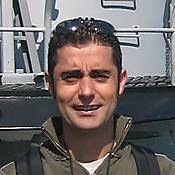Quoted Text
Thanks Mark. I have Osprey's How to use an Airbrush book, a insert on airbrushing from FSM, and I've read a number of articles online. I think I got at least as much information from your post, for FREE, than I did those other sources.
Well thank you, Rodge, I'm glad someone can get a little good out of my ramblings...basically, I make alot of mistakes and experiment alot, and document what works best for me...I've tried things that other modelers do with completely different results...I dunno...
Quoted Text
I have the little blue Testors air compressor. I got it because it's quiet, not like my big compressor I use for my home improvement tools. It has no air preassure regulator. So that means I have to vary things like the thinner to paint ratio, and the distance. Any suggestions for doing this?
I'll be absolutely honest with you Rodger, and tell you that I have been using the same compressor for years, which is an old Dayton compressor with twin air tanks, and i've never really strayed from this setup...my best advice I think would be to experiment with different ratios, spray distances, etc. and follow the best path...Do you know how much air displacement your Testors compressor puts out? Sometimes this can be a
HUGE deciding factor of how to mix your paint...and there's alot of other variables too, airbrush type, style, and even amounts of humidity in the air that can effect how your paint flows..often it's just a little too complicated for me and I grab a rattle can and git' er done!
Quoted Text
Also I've always hand painted Future on my kits. Do you have any suggestions on airbrushing it?
OK Rodge, now this is something that I've experimented with meself...I know some guys that do spray FUTURE clear and get good results, but personally, every time that I try this I get a different result...sometimes good, some not so good...the proper consistency should be about the same liquid texture as 2% milk...and the stuff clogs easily in your airbrush, so you have to get the job done fast or your going to have a gummy nozzle...but cleanup is easy with some warm water. For most of my applications Rodge, I just hand brush on a good heavy coat and let it settle out naturally...works best for me, mate! Hope I helped you out some, my friend, but the best advice from alot of the
real airbrush artists that I've talked to is just experiment with what you have and practice alot...
~Gunny





























